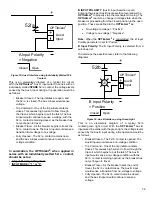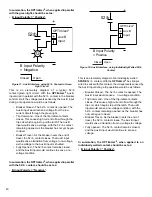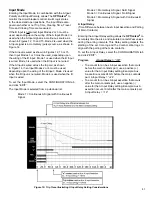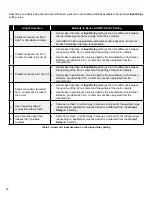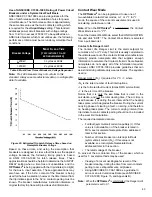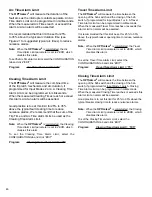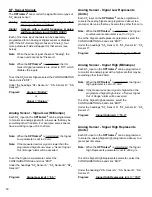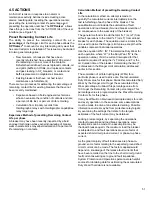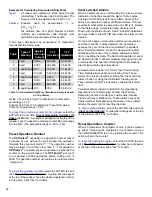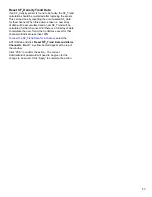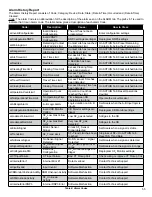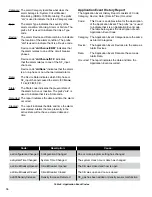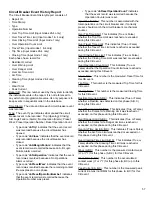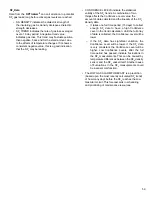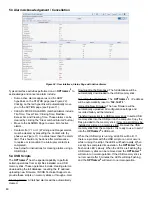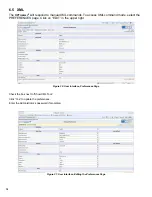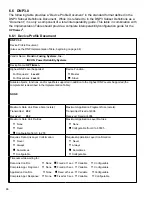
51
4.5 ACTIONS
An “Action” is taken in response to an alarm or
maintenance activity. Actions include clearing active
alarms; resetting data; resetting the operations counter;
pre-setting the remaining contact life percentage and
presetting the operation number. The
OPTI
mizer
2
allows
these things to be done from the “ACTION” tab of the user
interface (see Figure 10).
Preset Remaining Contact Life
The ability to preset the remaining contact life as a
percentage
of the Danger Limit for each phase allows the
OPTI
mizer
2
to account for any interrupting duty wear that
has occurred prior to installation. This issue may be divided
into two general categories:
• New breakers, or breakers that have been
recently refurbished, have essentially 100 percent
life remaining on one or more of the contacts.
Refurbished is defined here as replaced contacts, oil
and grids (baffles) in OCBs, and replaced contacts
and gas cleaning in SF
6
breakers, or contact and
baffle replacement in magblast air breakers.
• Existing breakers that have not had recent
maintenance (refurbishment)
There are two processes for estimating the percentage of
remaining contact life for existing breakers that have not
been recently maintained:
• Experience based on field engineers / technicians
who can evaluate the condition of contacts and rate
a percent of life lost, or percent of life remaining.
• Calculation from trip duty records from
Oscillographs, relays with Oscillographic capabilities,
relay target logs.
Experience Method of presetting Remaining Contact
Life per phase
A breaker may have been recently inspected by a field
engineer / technician whose expert knowledge of breaker
wear characteristics may allow declaration of a percent of
life remaining on contacts.
Calculation Method of presetting Remaining Contact
Life
In the calculation method, an attempt is made to
quantify the cumulative currents interrupted since the
last refurbishing of each phase of the breaker. This
quantification would include the summation of fault
operations and load breaks. (No-load breaks would be of
no consequence to the wear duty of the breaker.)
The general method is to add the total I² x T (or I x T) from
all fault operations to the total I² x T (or I x T) from all load
breaks for each phase. The equation used is similar to the
one used to derive the Danger Limit value, except that the
variables represent individual operations.
Use the equation WN = IN² T to determine Duty Wear for
each operation, where “W” is the Duty Wear, “N” is the
operation number, IN is the current interrupted for that
operation (squared if using the I² x T mode), and T is the
arc duration time of the breaker. Determining the time (T)
is discussed in the Danger Limit calculation, addressed
earlier in this section.
The summation of all interrupting duty (WN’s) for a
particular phase is used to arrive at a final accumulated
Duty Wear value for that phase. Divide this calculated Duty
Wear by the Danger Limit to get the accumulated Duty
Wear percentage. Subtract this percentage value from
100 to get the Remaining Contact Life percentage. This
percentage value is programmed as the Preset Remaining
Contact Life for this phase.
It may be difficult to obtain exact interrupted amps for each
and every operation. In these cases, some assumptions
must be made to arrive at an estimated setting. Possible
information sources may be from protective relay targets.
By examining the settings that relate to the targets,
estimates of the fault current may be obtained.
Lacking precise targets, by separating the operations
into fault operations and load break operations, some
assumptions can be made. One assumption may be
that load breaks equal ½ the maximum load the breaker
is subjected to, and fault operations are some factor of
expected short circuit ground current, or phase-to-phase
current.
As the great majority of fault incidences are phase-to-
ground, some factor relating to the expected ground short
circuit current can be made. The factors applied would
depend on knowledge of the relative fault currents that
have been recorded on the line to the short circuit ground
fault current assuming zero ground fault impedance.
System Protection and Operations personnel are helpful
sources for obtaining data for estimating the accumulated
Duty Wear if hard data is not available.



